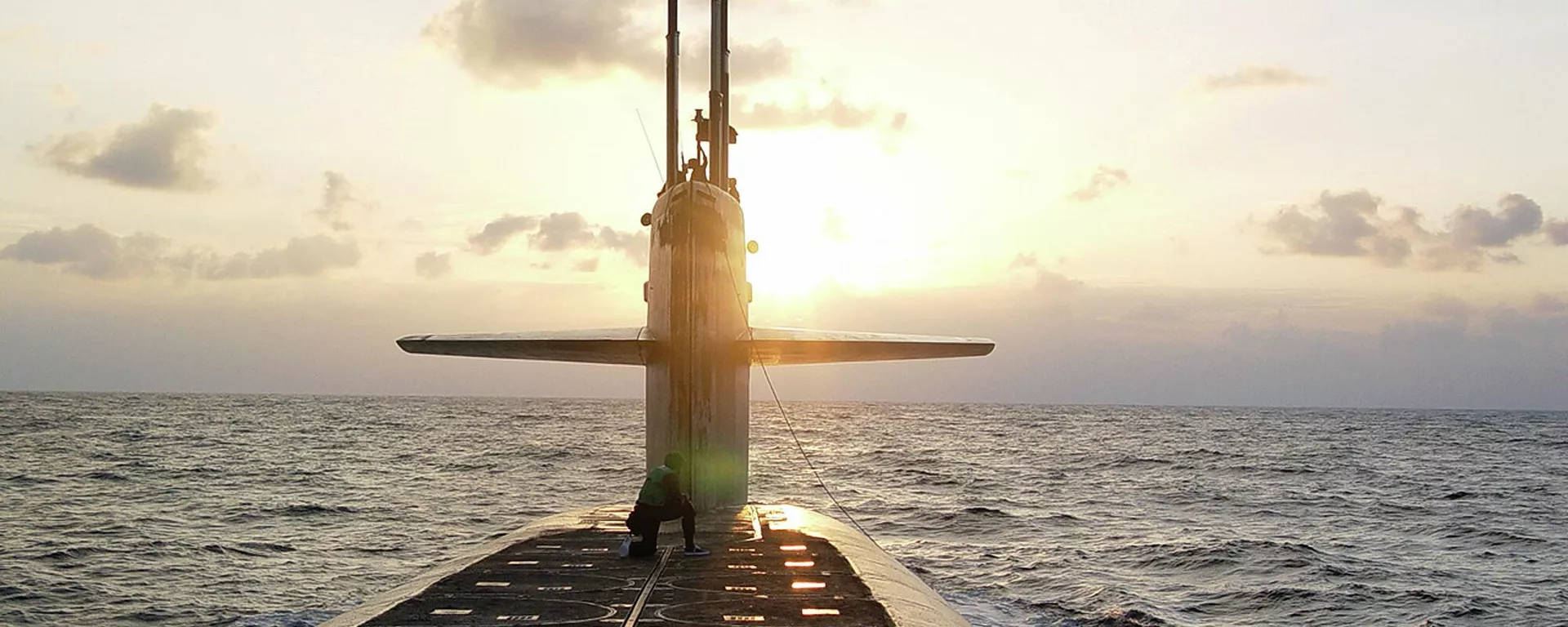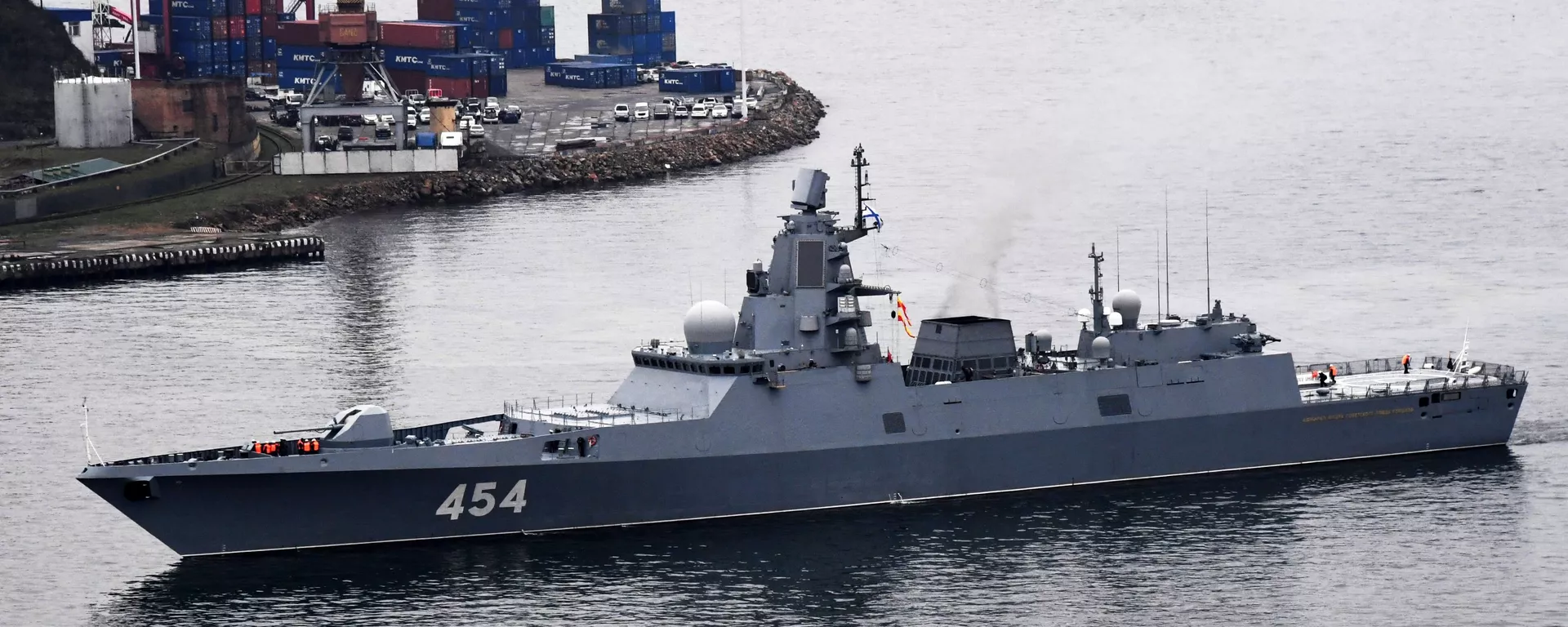https://sputnikglobe.com/20230314/which-feature-allows-russias-yasen-class-submarine-to-outpace-its-american-rival-1108396336.html
Which Feature Allows Russia's Yasen-Class Submarine to Outpace its American Rival
Which Feature Allows Russia's Yasen-Class Submarine to Outpace its American Rival
Sputnik International
Canberra is due to receive three Virginia-class submarines under the aegis of the Australia-UK-US (AUKUS) pact, according to the US State Department. Vasily... 14.03.2023, Sputnik International
2023-03-14T18:57+0000
2023-03-14T18:57+0000
2023-03-14T19:19+0000
analysis
russia
us
opinion
military
military equipment
yasen-class submarine
zircon hypersonic cruise missile
3m22 zircon
asia-pacific region
https://cdn1.img.sputnikglobe.com/img/107862/50/1078625082_0:150:3109:1898_1920x0_80_0_0_247b950094f25c9db825c432710377fe.jpg.webp
US President Joe Biden, UK Prime Minister Rishi Sunak and his Australian counterpart Anthony Albanese have unveiled a new joint nuclear submarine program. The program envisages selling at least three nuclear-powered conventionally-armed Virginia-class subs to Australia by the early 2030s, with the option for Canberra to buy two more boats.The trilateral bloc coined AUKUS was founded in 2021. The alliance shares military capability, including cyber, artificial intelligence, and quantum technologies, as well as hypersonic weapons and nuclear-powered attack submarines. Commenting on the bloc's latest initiative, Russian Foreign Minister Sergey Lavrov noted that the creation of bloc structures like AUKUS is "making a serious bid for confrontation for many years" in the Asia-Pacific region.Moscow has good reasons to be concerned due to its unique geographical position: stretching across a staggering eleven time zones, Russia lies in Europe and Asia with the Russian Far East being generally included in a wider Asia-Pacific region. Russia has repeatedly warned against the further militarization of both Europe and Asia, in the regions lying close to its borders.Still, Russia can protect itself as it boasts modern military equipment either on a par with, or sometimes even more advanced than its NATO counterparts.When it comes to underwater craft, the US-made Virginia-class submarines are usually compared to Russia's Yasen-class subs. Both Virginia and Yasen are fourth-generation multi-purpose attack submarines, but one has a vital upper hand in a key area.The Yasen-Class vs the Virginia-ClassThe Yasen-class and the Virginia-class subs are 119 meters and 115 meters long, respectively, and operate at almost similar speeds. However, in terms of weight, the former weighs 13,800 tons when submerged while the latter 8,000 tons. As such, the Yasen-class vessels can dive deeper.The Virginia-class subs began to be commissioned in the mid-2000s, while the Yasens were commissioned between 2014 and 2021. The Project 885M Yasen-class nuclear-powered guided-missile submarine (SSGN) Novosibirsk joined the Russian Navy's Pacific Fleet in September 2022.What the two subs differ in is their armament, according to Dandykin. The Yasen-class subs carry Oniks anti-ship cruise missiles (operational range between 600 and 800 km) or Kalibr multipurpose missiles. The Virginia-class vessels are only armed with the inferior Mk 48 torpedoes, Harpoon anti-ship missiles, and Tomahawk land attack missiles.Russia's 3M22 Zircon, a maneuvering anti-ship hypersonic cruise missile, can destroy both sea-going and land-based targets. According to the weapon's specifications, first revealed by Russian President Vladimir Putin on February 20, 2019, this hypersonic missile is capable of accelerating to about Mach 9 (10,734 km/h or 6,905 mph). The weapon's maximum firing range could reportedly exceed 1,000 kilometres (620 miles). On October 6, 2020 Russia successfully launched the Zircon from the Admiral Gorshkov frigate in the White Sea, in the north of Russia. In early October 2021, Russia's Yasen-class submarine Severodvinsk successfully test-fired the hypersonic missile from a depth of 40 meters for the first time at mock targets in the Barents Sea.Russia Filling Gap in Multi-Purpose SubsThat said, the US has outpaced Russia in terms of the number of multipurpose nuclear-powered submarines, according to Dandykin.All in all, the Russian Navy commands one of the largest submarine fleets in the world with an estimated 58 vessels. However, when it comes to the Yasen-class subs, Russia has only three of them in operation with one more undergoing sea trials and many others yet to be built. For its part, the US already has 22 Virginia-class subs, which began to be commissioned in the mid-2000s, and three boats of the Seawolf class.When it comes to a potential mano a mano between a Yasen-class vessel and its American competitor the result would primarily depend on the skill of the crew and the commander of the boat, the captain noted.Arctic and Asia Pacific RegionsWith Russia and the US, two major nuclear-armed powers, the geopolitical competition between them appears to gain pace amid NATO's involvement in the Russo-Ukrainian conflict and Washington's threats to unleash a strategic defeat on Russia.In terms of geography, the Arctic and Asia Pacific region will be of utmost importance in coming years, Dandykin emphasized.
https://sputnikglobe.com/20230314/worlds-10-most-numerous-submarine-forces-1108395041.html
https://sputnikglobe.com/20221205/how-many-nuclear-submarines-does-the-us-have-1105057400.html
https://sputnikglobe.com/20230125/russian-frigate-admiral-gorshkov-test-fires-zircon-missile-in-atlantic-1106674775.html
https://sputnikglobe.com/20221205/how-many-nuclear-submarines-does-russia-have-1105034535.html
russia
Sputnik International
feedback@sputniknews.com
+74956456601
MIA „Rossiya Segodnya“
2023
News
en_EN
Sputnik International
feedback@sputniknews.com
+74956456601
MIA „Rossiya Segodnya“
Sputnik International
feedback@sputniknews.com
+74956456601
MIA „Rossiya Segodnya“
us virginia-class submarine, asia pacific region, indo-pacific region, aukus, australia to buy three us submarines, russia's yasen-class submarines, zircon hypersonic missiles
us virginia-class submarine, asia pacific region, indo-pacific region, aukus, australia to buy three us submarines, russia's yasen-class submarines, zircon hypersonic missiles
Which Feature Allows Russia's Yasen-Class Submarine to Outpace its American Rival
18:57 GMT 14.03.2023 (Updated: 19:19 GMT 14.03.2023) Canberra is due to receive three Virginia-class submarines under the aegis of the Australia-UK-US (AUKUS) pact, according to the US State Department. Vasily Dandykin, captain of the 1st rank of the reserve and a military expert, has sat down with Sputnik to discuss the US underwater craft and its Russian competitor.
US President Joe Biden, UK Prime Minister Rishi Sunak and his Australian counterpart Anthony Albanese have unveiled a new joint nuclear submarine program. The program envisages selling at least three nuclear-powered conventionally-armed Virginia-class subs to Australia by the early 2030s, with the option for Canberra to buy two more boats.
The trilateral bloc coined AUKUS was founded in 2021. The alliance shares military capability, including cyber, artificial intelligence, and quantum technologies, as well as hypersonic weapons and nuclear-powered attack submarines. Commenting on the bloc's latest initiative, Russian Foreign Minister Sergey Lavrov noted that the creation of bloc structures like AUKUS is "making a serious bid for confrontation for many years" in the Asia-Pacific region.
Moscow has good reasons to be concerned due to its unique geographical position: stretching across a staggering eleven time zones, Russia lies in Europe and Asia with the Russian Far East being generally included in a wider Asia-Pacific region. Russia has repeatedly warned against the further militarization of both Europe and Asia, in the regions lying close to its borders.
Still, Russia can protect itself as it boasts modern military equipment either on a par with, or sometimes even more advanced than its NATO counterparts.
When it comes to underwater craft, the US-made Virginia-class submarines are usually compared to Russia's Yasen-class subs. Both Virginia and Yasen are fourth-generation multi-purpose attack submarines, but one has a vital upper hand in a key area.

5 December 2022, 13:01 GMT
The Yasen-Class vs the Virginia-Class
The Yasen-class and the Virginia-class subs are 119 meters and 115 meters long, respectively, and operate at almost similar speeds. However, in terms of weight, the former weighs 13,800 tons when submerged while the latter 8,000 tons. As such, the Yasen-class vessels can dive deeper.
The Virginia-class subs began to be commissioned in the mid-2000s, while the Yasens were commissioned between 2014 and 2021. The Project 885M Yasen-class nuclear-powered guided-missile submarine (SSGN) Novosibirsk joined the Russian Navy's Pacific Fleet in September 2022.
What the two subs differ in is their armament, according to Dandykin. The Yasen-class subs carry Oniks anti-ship cruise missiles (operational range between 600 and 800 km) or Kalibr multipurpose missiles. The Virginia-class vessels are only armed with the inferior Mk 48 torpedoes, Harpoon anti-ship missiles, and Tomahawk land attack missiles.
"Most importantly, our Yasen-M will be equipped not only with Kalibr missiles, which everyone knows, but also with Zircon hypersonic missiles, which have no analogs in the world now, and, I think, will have no analogs for years to come. This is the most important advantage," the military expert stressed. "Obviously, the Yasen (…) can work on strategic submarines, and on coastal targets, and on surface ships, including aircraft carrier groups."
Russia's 3M22 Zircon, a maneuvering anti-ship hypersonic cruise missile, can destroy both sea-going and land-based targets. According to the weapon's specifications, first revealed by Russian President Vladimir Putin on February 20, 2019, this hypersonic missile is capable of accelerating to about Mach 9 (10,734 km/h or 6,905 mph).
The weapon's maximum firing range could reportedly exceed 1,000 kilometres (620 miles). On October 6, 2020 Russia successfully launched the Zircon from the Admiral Gorshkov frigate in the White Sea, in the north of Russia. In early October 2021, Russia's Yasen-class submarine Severodvinsk successfully test-fired the hypersonic missile from a depth of 40 meters for the first time at mock targets in the Barents Sea.

25 January 2023, 06:23 GMT
Russia Filling Gap in Multi-Purpose Subs
That said,
the US has outpaced Russia in terms of the number of multipurpose nuclear-powered submarines, according to Dandykin.
All in all, the Russian Navy commands one of the largest submarine fleets in the world with an estimated 58 vessels. However, when it comes to the Yasen-class subs,
Russia has only three of them in operation with one more undergoing sea trials and many others yet to be built. For its part, the US already has 22 Virginia-class subs, which began to be commissioned in the mid-2000s, and three boats of the Seawolf class.
"We are in second place in terms of quantity [of nuclear-powered attack subs]," the Russian military expert said. "And actually, we are now filling the gap in multi-purpose boats."
When it comes to a potential mano a mano between a Yasen-class vessel and its American competitor the result would primarily depend on the skill of the crew and the commander of the boat, the captain noted.
"Our boat is more automated, we have a smaller crew," Dandykin said. "As a rule, they have a larger crew, they always go for it, do not rely on equipment, and so on. I think that, in principle, they are equal contenders in many respects. But still, taking into account all the developments, our Yasens are more powerful."

5 December 2022, 06:41 GMT
Arctic and Asia Pacific Regions
With Russia and the US, two major nuclear-armed powers, the geopolitical competition between them appears to gain pace amid NATO's involvement in the Russo-Ukrainian conflict and Washington's threats to unleash a strategic defeat on Russia.
In terms of geography, the Arctic and Asia Pacific region will be of utmost importance in coming years, Dandykin emphasized.
"The main task now is largely in the Arctic, where the Americans want to have their advantage, under-ice navigation and so on, and not only there but also in the Pacific Ocean and near Kamchatka," he said. "Further, what is happening now with Taiwan, with China [also deserves attention]. Naturally, these are submarines of unlimited seaworthiness and their tasks are performed anywhere in the world's oceans."








